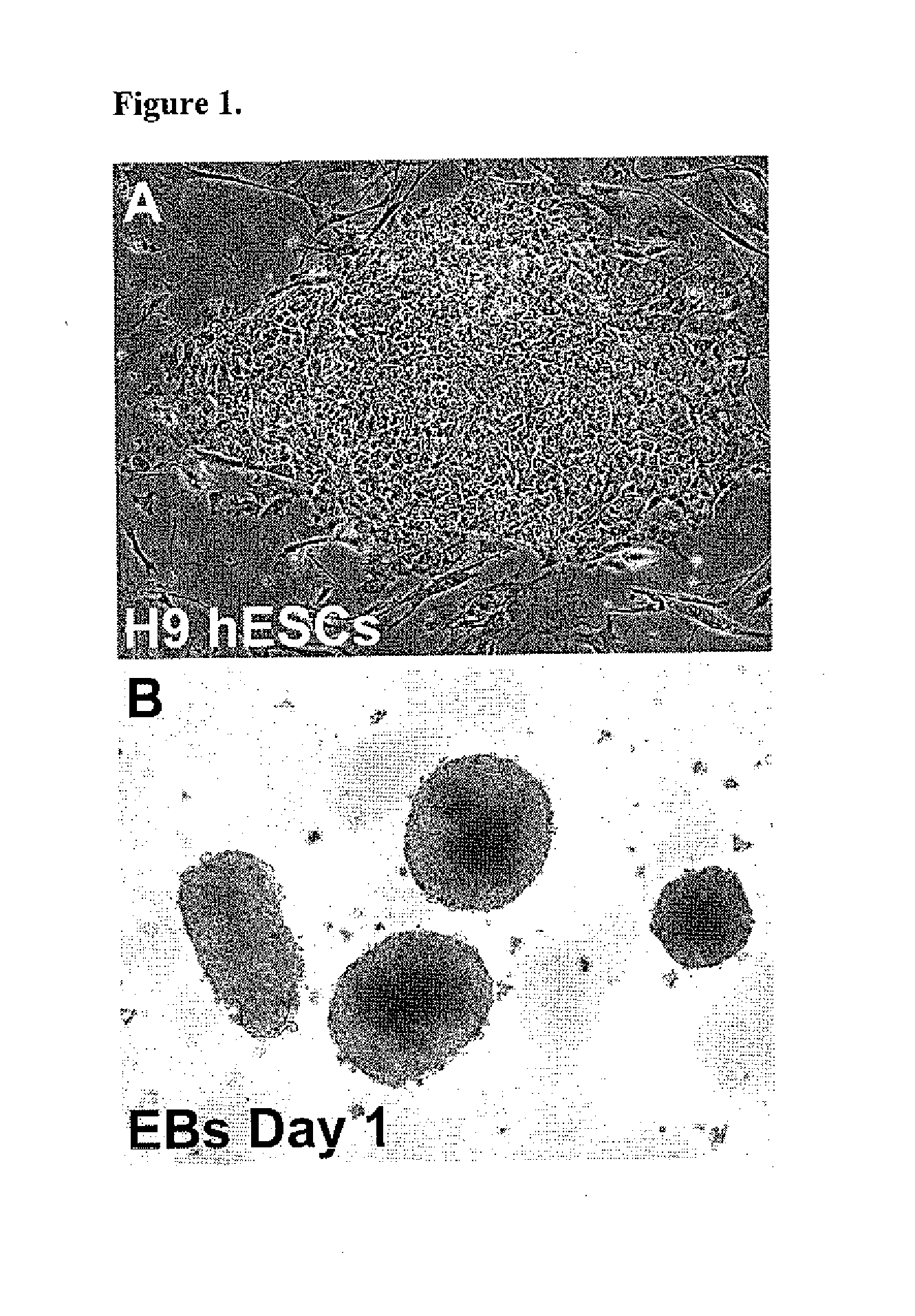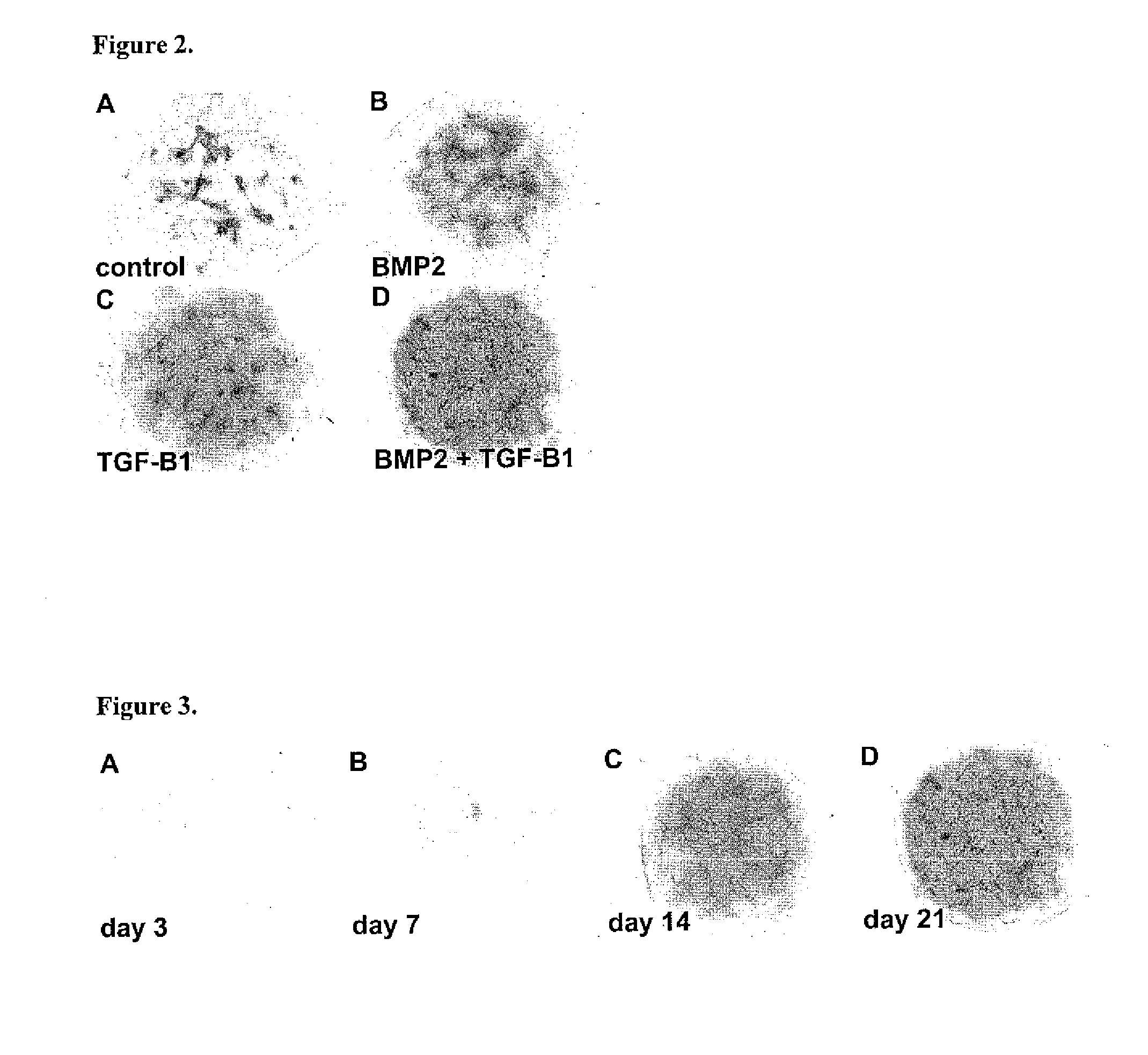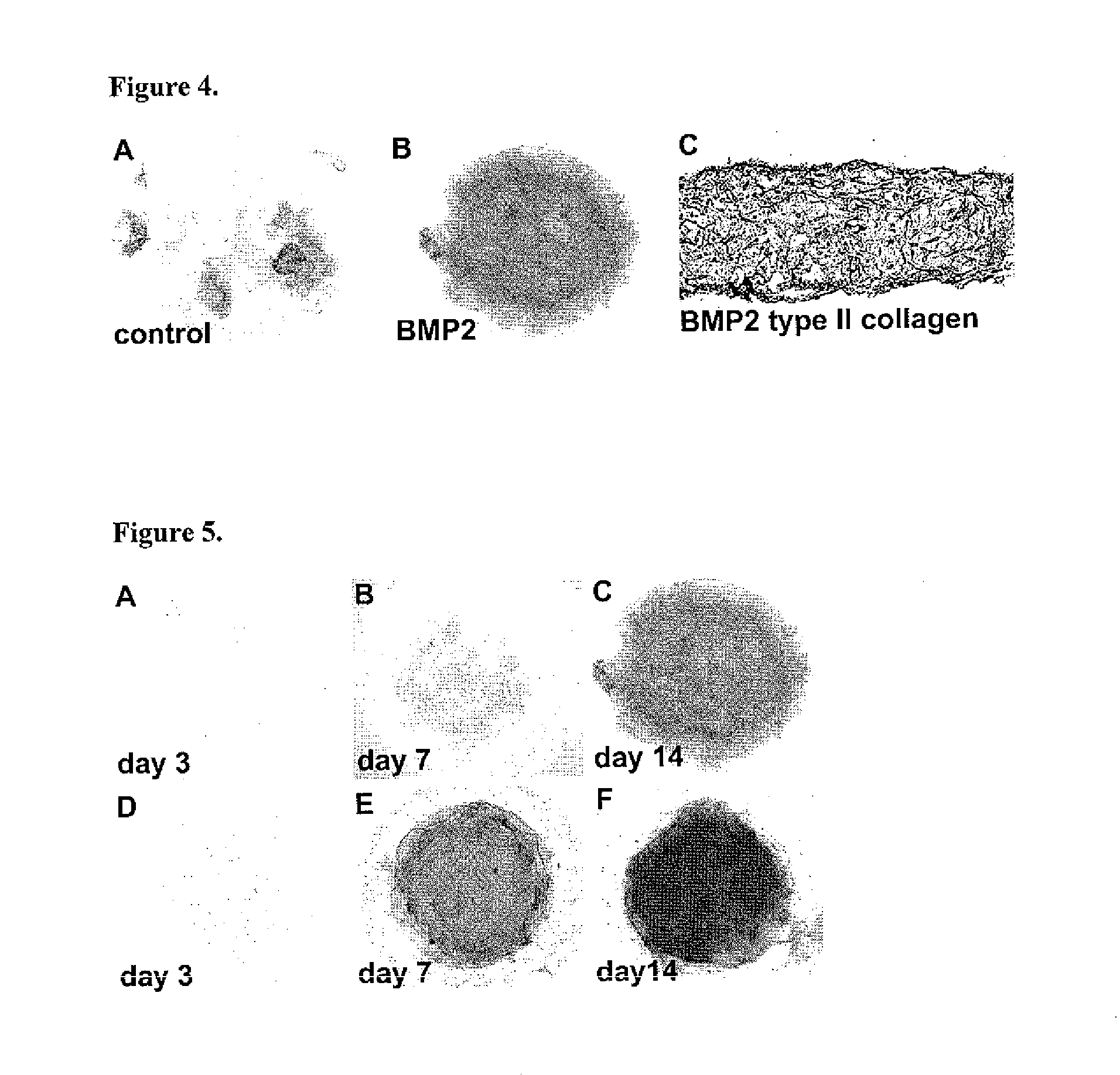Differentiation of Human Embryonic and Induced Pluripotent Stem Cells
- Summary
- Abstract
- Description
- Claims
- Application Information
AI Technical Summary
Benefits of technology
Problems solved by technology
Method used
Image
Examples
example 1
Culture of hESCs and Embryoid Body Formation
[0069]The H9 hESC line generated at the WiCell Research Institute (Thomson J A et al., 1998 Science, 282:1145-1147). The H9 cells were cultured in the serum-free hESC medium previously described (Toh W S et al., 2007 Stem Cells, 25:950-960) on a feeder layer of irradiated CF1 mouse embryonic fibroblasts (MEFs) (see, FIG. 1A) prepared using standard protocols by the University of Connecticut Stem Cell Core. Colonies were passaged every 4-6 days after treatment with 1 mg / ml collagenase IV (Invitrogen). hESCs from passage numbers 36 to 45 were used in these studies.
[0070]To generate EBs, hESC colonies were detached from the MEF feeder layers by treatment with 0.1% dispase (Invitrogen) for 20-30 minutes at 37° C., suspended in EB formation medium (Toh W S et al., 2007 Stem Cells, 25:950-960) in T75 Ultra-Low Attachment Flasks (Corning, Lowell, Mass.), and incubated for 5 days. Media was changed every 48 hours. The suspended hESC colonies form ...
example 2
Direct and Progressive Chondrogenic Differentiation of Undifferentiated Pluripotent hESCs
[0074]In view of the ill-defined cellular environments and inherent cellular heterogeneity characteristic of EBs, the ability of undifferentiated pluripotent H9 hESCs (FIG. 1A) to directly differentiate into the chondrogenic lineage when subjected to high density culture was examined. High density cultures are characterized by a concentration of greater than 1×105 cells per 10 μl of medium. For example, the concentration of cells is in the range of 1-4×105 cells per 10 μl of medium, e.g., 2×105 cells per 10 μl. The volumes are scaled up as desired for larger scale cultures provided that the cell density / ratio remains in the range described above.
[0075]One day after their establishment, micromass cultures of dissociated H9 cells were supplied with serum-free “chondrogenic medium” in the presence and absence of 100 ng / ml of BMP2. As shown in FIG. 4A, only a few small Alcian blue staining areas wer...
example 3
Characterization of Cells in Various Phases of the Chondrogenic Lineage in hESC Micromass Cultures by Gene Expression Profiling
[0078]To confirm and quantify the progression of the differentiation of pluripotent hESCs into the chondrogenic lineage and to further characterize progenitor cells in different phases of the lineage, the expression of marker genes characteristic of different stages of the chondrogenic lineage was examined by quantitative Real Time RT-PCR. Gene expression patterns were analyzed at various times in BMP2-treated micromass cultures of pluripotent hESCs subjected to the modified chondrogenic differentiation protocol that leads to the progressive chondrogenic differentiation assayed by Alcian blue matrix staining as shown in FIGS. 5D-F above.
[0079]As shown in FIG. 7A, at the end of day 3 of culture, which is 24 hours after the addition of exogenous BMP2, there is a striking 7-fold upregulation in the expression of the chondrogenic transcription factor Sox9. Sox9 ...
PUM
| Property | Measurement | Unit |
|---|---|---|
| Fraction | aaaaa | aaaaa |
| Fraction | aaaaa | aaaaa |
| Time | aaaaa | aaaaa |
Abstract
Description
Claims
Application Information
 Login to View More
Login to View More - R&D
- Intellectual Property
- Life Sciences
- Materials
- Tech Scout
- Unparalleled Data Quality
- Higher Quality Content
- 60% Fewer Hallucinations
Browse by: Latest US Patents, China's latest patents, Technical Efficacy Thesaurus, Application Domain, Technology Topic, Popular Technical Reports.
© 2025 PatSnap. All rights reserved.Legal|Privacy policy|Modern Slavery Act Transparency Statement|Sitemap|About US| Contact US: help@patsnap.com



